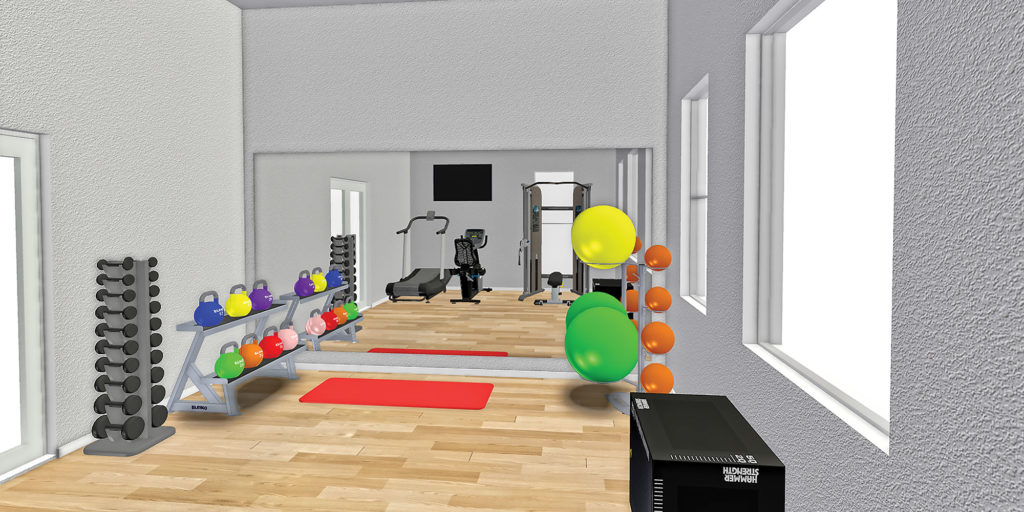What’s your motivation?
“It makes a big difference in how much space you need,” says Doug Carter, president of FitRev, a Tampa-based fitness design firm. “Are you trying to supplement your workout or do an entire workout at your house? We’ll make a 3D layout of the room to see if it’ll be functional with what you want to do. The more space you have, the more you can do in it.”
Location, location, location
“Where the room is located is a big factor. Putting a treadmill on the second floor in an old house that vibrates may be disruptive to other family members. You want a comfortable area, which will make it more attractive to do your workouts. A lot of people are using an extra bedroom or office, so in those spaces it’s best to do one piece of cardio equipment and a full body trainer.”

Flooring is key
“You can do carpet tiles with a rubber back side, and a rubber floor itself can be attractive. However, in drop areas, rubber is not always going to solve the problem. A rubber floor will disintegrate over time if you’re dropping heavy weights on it, and the floor underneath — even if it’s cement — can be damaged. I suggest using rubber dumbbells. Rubber on rubber solves some of the problem.
“Most people don’t want to redo their floors, so if you’re putting in free weights, make sure to get rubber mats or interlocking tiles for your weight area. Mats range from a quarter-inch to 2 inches and are made for different things. Always put a rubber mat under your cardio equipment to catch sweat.”

Consider the equipment you need
“You have to be careful and only put in pieces you’re going to use on a regular basis. Technology is big for home gyms, and Peloton is a big testament to that. Get a treadmill or a bike and install a TV in the wall, or you can get a treadmill with a personal viewing screen. The most popular pieces of cardio equipment are treadmills, followed by ellipticals, then bikes and rowers. For strength, multi-use pieces like Smith machines with other attachments are best. A functional trainer is probably safer than a Smith machine, and you can work every body part.”

Go with the professional-grade equipment
“A lot of a people who install home gyms still go to a gym because they like the quality of the commercial equipment. They’ll go to buy home equipment, and it’s not the same quality they’re used to. People end up wasting money because the lower quality is a turn-off, and they don’t use it. Most of our customers want that professional feel.”
TIP “Home products that are made by commercial manufacturers generally have better, smoother and more biomechanically correct motions because they share similar designs to the professional club models.”

Doug Carter is the owner of Tampa-based fitness design firm FitRev. The company specializes in commercial fitness room design and has equipped the home gyms of well-known figures like actor Nick Nolte and former MLB player Chipper Jones.



